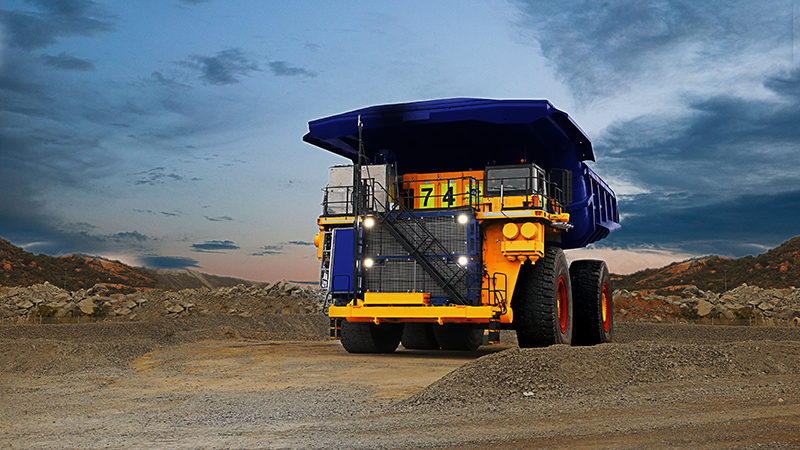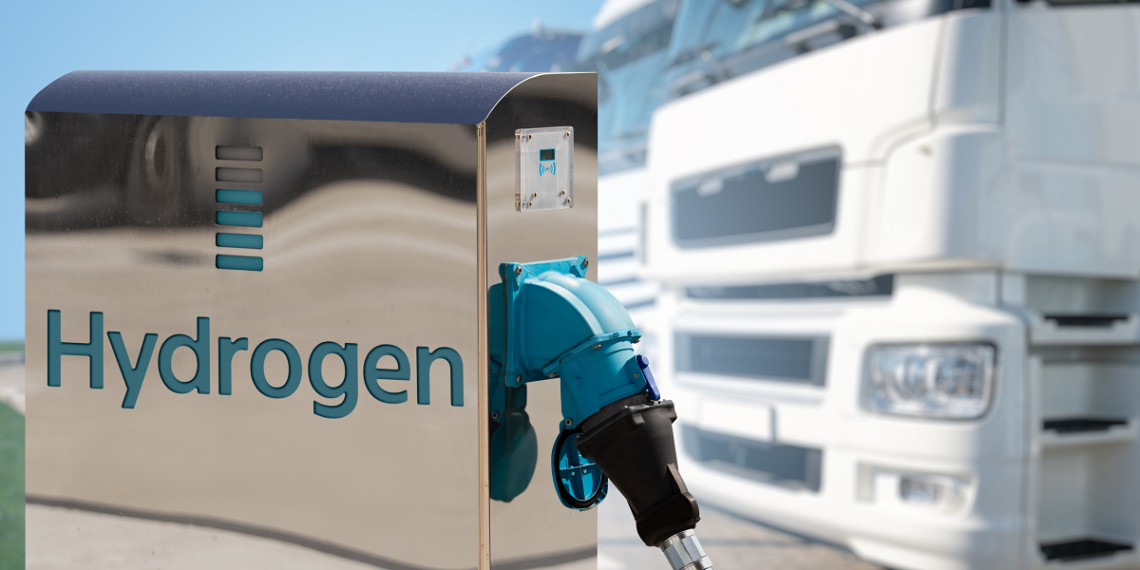Hydrogen usage has been labelled a key component on the sustainable pathway to a renewable energy future.
And the global mining industry has been a first mover in taking on the hydrogen challenge in developing that sustainable pathway and preparing for its use in industry.
Powering mining vehicles has long been identified as one of the most obvious ways that hydrogen can benefit mining operations of the future.
The potential benefits that hydrogen can provide were highlighted in late May when UK-headquartered Anglo American plc (LSE: AAL) provided a glimpse into how hydrogen technology can both benefit the mining sector and also help to improve the environment.
That future was revealed to a global audience when Anglo American unveiled a prototype of the world’s largest hydrogen-powered mine haul truck designed to operate in everyday mining conditions at its Mogalakwena PGMs mine in South Africa.
The 2MW hydrogen-battery hybrid truck, generating more power than its diesel predecessor and capable of carrying a 290-tonne payload, is part of Anglo American’s nuGen™ Zero Emission Haulage Solution (ZEHS). nuGen™ provides a fully integrated green hydrogen system, consisting of a production, fuelling and haulage system, with green hydrogen to be produced at the mine site.

The company says nuGen™ is part of FutureSmart Mining, Anglo American’s innovation-led approach to sustainable mining, which brings together technology and digitalization to drive sustainability outcomes, including its commitment to carbon-neutrality across its operations by 2040.
“nuGen™ is a tangible demonstration of our FutureSmart Mining programme changing the future of our industry,” said chief executive Duncan Wanblad.
“With diesel emissions from our haul truck fleet accounting for c.10-15% of our total Scope 1 emissions, this is an important step on our pathway to carbon neutral operations by 2040. The mining industry is playing a considerable role in helping the world decarbonize, both through our own emissions footprint and the metals and minerals that we produce that are critical to low carbon energy and transport systems.
“Over the next several years, we envisage converting or replacing our current fleet of diesel-powered trucks with this zero-emission haulage system, fuelled with green hydrogen. If this pilot is successful, we could remove up to 80% of diesel emissions at our open pit mines by rolling this technology across our global fleet.”
Anglo American has been a longstanding champion of the potential offered by the hydrogen economy, recognizing its role in enabling the shift to greener energy and cleaner transport. The company says the hydrogen economy provides an opportunity to create new engines of economic activity.
For the nuGen™ project, Anglo American has worked with some of the world’s leading creative engineering and technology companies, such as ENGIE, First Mode, Ballard and NPROXX. This was necessary to design, build, and test a 1.2MWh battery pack as the haul truck system uses multiple fuel cells that deliver up to 800kW of power, combining to deliver a total of 2MW of power. The project also required the design and implementation of a software solution to safely manage power and energy between the fuel cells, batteries, and vehicle drivetrain.
The company also develop the power management and battery systems from the ground up, enabling it to tailor the system to each mine and improve overall efficiency by designing in energy recovery as the haul trucks travel downhill through regenerative braking. Finally, it was necessary to build a hydrogen production, storage, and refuelling complex at Mogalakwena that incorporates the largest electrolyser in Africa and a solar plant to support the operation of the haul truck.
“The impact of our nuGen™ project goes far beyond our operations. We believe that the emerging hydrogen sector has the potential to dramatically improve the growth and development of many economies by creating new industrial value chains and economic generation opportunities. Growing the hydrogen economy will revolutionize not just Anglo American’s operations, but all mining and many other industries – and ultimately shape a better, cleaner world,” Mr Wanblad said.
Hydrogen to power mining’s future
Other leading mining firms have also invested significantly in developing hydrogen answers to their future fuel problems.
Anglo American has been joined by three other mining giants – BHP, Fortescue, and Hatch – in the formation of a Green Hydrogen Consortium in Australia. The consortium is part of a larger group formed with Australian scientific think tank, the CSIRO.
“Mining operations use enormous amounts of diesel, which is a huge operational expense. For mining companies that operate in remote areas, diesel is the only source of power,” says Dr Daniel Roberts, Leader, Hydrogen Energy Systems Future Science Platform at the CSIRO.
“There’s a strong drive to decarbonize mining operations. Hydrogen can be used to store renewable energy to generate electricity, it can power equipment and trucks and cars, and it can even be used in certain mining processes as a reductant,” Dr Roberts says.
Dr Roberts’ group is part of a wider CSIRO effort to support the emerging hydrogen industry, which includes an A$20 million partnership between CSIRO and Fortescue Metals Group (ASX: FMG) to develop industry applications of CSIRO’s metal membrane technology, which can rapidly convert hydrogen from ammonia, used to easily transport and store hydrogen.
CSIRO’s Hydrogen Energy Systems Future Science Platform is a key research centre working on new science and technology which will allow industry – including the mining sector – to decarbonize operations, transport, and production processes.
“Much of our work involves the foundational science and the technology development that’s not yet ready for our industry partners to invest in, but which has the potential to grow the hydrogen energy industry,” says Dr Roberts.
The group works with low-readiness level hydrogen technologies, he explains. This involves creating new capabilities and new technologies around hydrogen production, transport, and use from a variety of renewable sources, and bringing these to demonstration stage.
CSIRO business units then work with industry partners to kick off the technology commercialization pipeline to bring these innovations to market.
Renewable or low-carbon hydrogen is a clean alternative and can lead to efficiency savings. According to Dr Roberts, hydrogen could power many energy-hungry operations:
- By powering enormous haul trucks with hydrogen fuel cells. These transport the ore and waste at a mine site
- By powering small to medium-sized vehicles usually used to transport staff and machines
- Mines need a vast amount of power. Green hydrogen could be a part of the energy mix, providing storage and generation solutions
- As a reductant in the manufacture of “green steel” and other metals. As an alternative to coke or coal, green hydrogen could drastically reduce carbon emissions
Some examples of the mining sector betting big on hydrogen include Glencore’s RAGLAN Mine. This is located in northern Quebec in Canada, this mine has run a micro-grid powered by arctic-rated wind turbines connected to a hydrogen energy, battery, and flywheel storage system.
Another is Fortescue’s green ammonia plant. This project envisages constructing a 250MW green hydrogen plant at the Bell Bay Industrial Precinct with a green ammonia production capacity of 250,000 tonnes per year for domestic and international export. This project is still at an early stage, the company is also planning to make green steel.
CSIRO and Fortescue are working together to commercialize the technology that enables pure hydrogen to be pulled out of ammonia (by cracking), thereby completing a global renewable hydrogen supply chain based on ammonia.
Fortescue’s chair, Andrew Forrest, said his company is part of the beginning of an energy revolution and that Fortescue intends to be at the forefront of this once-in-a-generation opportunity.
Notably, industry analysts believe that mining sites could become “surplus producers” generating electricity even after the mine has closed, especially in remote areas off the grid.












